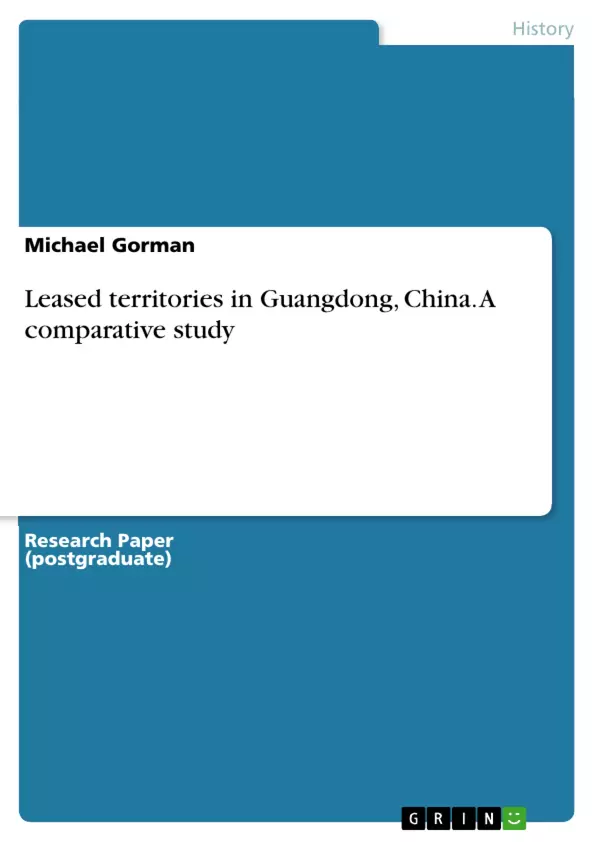Hong Kong, Macau, and Guangzhouwan were all leased and colonized under similar circumstances, but experienced differing degrees of cultural and socio-political alteration and influence.
The purpose of this research paper is to study these leased territories during their colonization, and find out how they differed during their periods as colonies, why the French gave their leased territory back to China so soon while Portugal and Britain did not, and what lasting effects colonialism had on each territory. This is so the audience will understand how they differ from one another—and mainland China— today.
Inhaltsverzeichnis (Table of Contents)
- Thesis Proposal
- Contextual Essay
- Literary Review
- Annotated bibliography
- Thesis
- Secondary Sources
- Primary Sources
- Photo Sources
Zielsetzung und Themenschwerpunkte (Objectives and Key Themes)
This research paper aims to analyze the impact of European colonialism on leased territories in Guangdong, China, during the 19th century. It investigates the distinct experiences of Hong Kong, Macau, and Guangzhouwan under British, Portuguese, and French rule, respectively. The paper seeks to understand the reasons behind the differing durations of colonial presence, particularly the early return of Guangzhouwan to China compared to the prolonged presence of Hong Kong and Macau. Moreover, the paper examines the lasting effects of colonialism on these territories and their integration back into Chinese society.
- The influence of European colonialism on leased territories in Guangdong, China.
- Comparative analysis of the colonial experiences of Hong Kong, Macau, and Guangzhouwan.
- The impact of colonialism on the cultural and socio-political landscapes of the territories.
- The reasons behind the differing durations of colonial presence in the three territories.
- The integration of these former colonies back into Chinese society after decolonization.
Zusammenfassung der Kapitel (Chapter Summaries)
- Thesis Proposal: This chapter introduces the research question, outlining the historical context of European colonization in Guangdong and the specific territories under investigation. It details the research objectives and the methods employed, including interviews, on-site studies, and a diverse range of academic and journalistic sources.
- Contextual Essay: This chapter provides a historical background of the Qing Dynasty, highlighting its internal conflicts and vulnerability to European influence. It contextualizes the rise of European colonialism in China and the subsequent signing of unequal treaties, leading to the establishment of leased territories.
Schlüsselwörter (Keywords)
This research focuses on the impact of European colonialism on leased territories in Guangdong, China. Key themes include colonial influence, cultural and socio-political change, the contrasting experiences of Hong Kong, Macau, and Guangzhouwan, and the process of decolonization and integration back into Chinese society. The study draws upon primary sources such as treaties and historical documents, as well as secondary sources from various academic disciplines.
- Quote paper
- Michael Gorman (Author), 2016, Leased territories in Guangdong, China. A comparative study, Munich, GRIN Verlag, https://www.grin.com/document/340746



